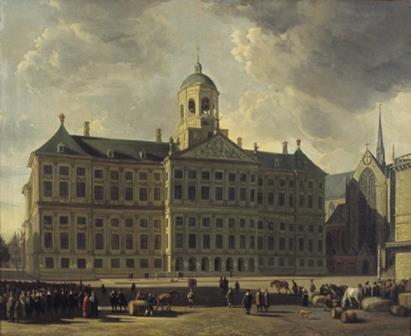Recommendation
In a letter dated 25 October 2012, the Minister of Education, Culture and Science (hereinafter referred to as the Minister) asked the Restitutions Committee (hereinafter referred to as the Committee) for advice about the application of 24 August 2012 from XX of YY (hereinafter referred to as the applicant) for the restitution of two paintings that are claimed to have formerly belonged to Sam Bernhard Levie.
The advice concerns the paintings Amsterdam Town Hall by Gerrit Berckheyde (NK 1978) and View of a Dutch Harbour with Figures by Adam Willaerts (NK 2729). Both works of art are currently part of the Netherlands Art Property Collection in the custody of the Dutch State.
